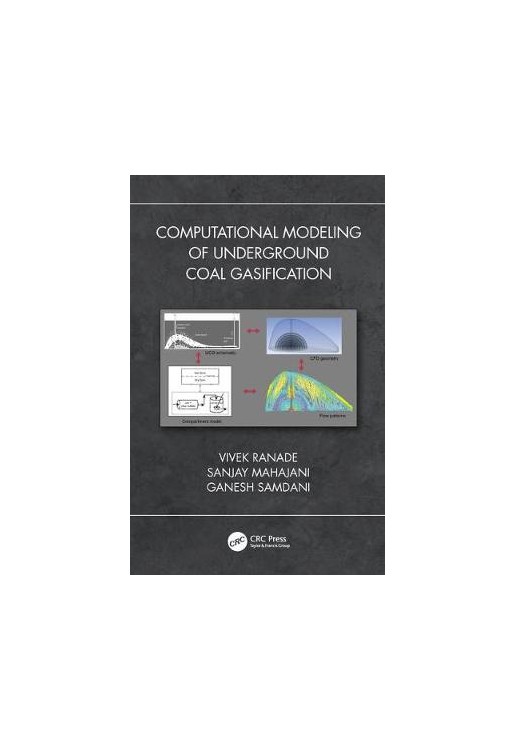The book deals with development of comprehensive computational models for simulating underground coal gasification (UCG). It starts with an introduction to the UCG process and discuss known process models with relative merits and limitations of the modeling approaches are highlighted and compared.
Chapter 1: Introduction
1.1. World energy scenario
1.2. Cleaner energy from coal
1.3. Underground coal gasification
1.4. Computational modelling of UCG
1.5. Organization of this book
Chapter 2: Underground Coal Gasification: State of the Art
2.1 Underground coal gasification
2.2 UCG technologies
2.3 UCG field trials
2.4 Mitigating environmental risks
2.5 Importance of coal properties in UCG process
Part I: Pre-requisites of Computational Modeling
Chapter 3: Physico-chemical Properties of Coal
3.1 Types of coal
3.2 Chemical properties of coal
3.3 Physical and mechanical properties
3.4 Summary
Chapter 4: Kinetics of Coal Gasification
4.1 Drying and pyrolysis
4.2 Chemical reactions
4.3 Kinetic studies - Experimental methods
4.4 Kinetic models for coal gasification
4.5 Catalytic effect of ash and char on different reactions
4.6 Summary
Chapter 5: Laboratory Studies on Underground Coal Gasification
5.1. Overview of laboratory-scale UCG experiments
5.2 Typical laboratory setup and procedure
5.3 Combustion cavity experiments
5.4 Gasification cavity experiments
5.5 Experiments to measure spalling rate
5.6 Determination of heat transfer coefficient in UCG cavity
5.7 Summary
Part II: Computational Modeling
Chapter 6: Approach towards computational modeling of UCG
6.1. Overall modelling approach
6.2. Role of thermodynamics and reaction kinetics
6.3. Role of flow patterns
6.4. Role of heat and mass transport
6.5. Role of spalling
6.6. Overview of available process models
6.7. Summary
Chapter 7: Thermodynamic & Reaction Engineering Models
7.1 Introduction
7.2 Thermodynamic models
7.3 Reaction engineering (CRE) models
7.4 Summary
Chapter 8: Multi-zonal and CFD Models
8.1. Introduction
8.2. Development of the compartment model
8.3. Results from compartment model
8.4. Model parametric studies
8.5. New integrated 3-D UCG simulator from LLNL
8.6. Computational fluid dynamics (CFD) based models
8.7. Well layout design for UCG
8.8. Summary and Conclusions
Part III: Summary
Chapter 9: Summary, Conclusions and Path Forward
9.1. UCG: Current status
9.2. Computational modelling for pushing frontiers & realizing potential of UCG
9.3. Path forward


